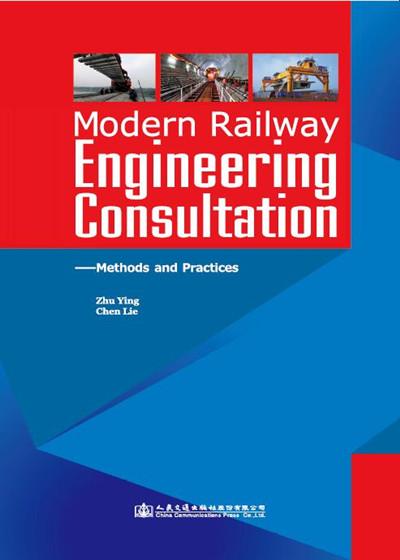Synopsis
The authors have been long engaged in the design, consultation and research of railways and in charge of the engineering consultation on many high-speed railways in China, including Beijing-Shanghai High-speed Railway and Wuhan-Guangzhou Passenger Dedicated Railway. This book was compiled on the basis of the systematic analysis and summary of China’s railway engineering consultation and in consideration of engineering consultation practices. The book is divided into five chapters, including Development and Technical Characteristics of Railways, Management of Railway Engineering Consultation, Methods for Railway Engineering Consultation, Key Points of Railway Engineering Consultation, and Cases of Railway Engineering Consultation.
The book excels in excellent descriptions and illustrations, rich contents, as well as good pertinence and practicability, so it may be used as a reference for relevant personnel engaged in the management, design, consultation and construction of railways and for the teachers and students of universities.
Unit 1?Development and Technical Characteristics of Railways 1
1.1?Overseas High-speed Railway Development 3
1.2?Speeding-up reconstruction of railways in China 13
1.3?Medium and long-term plans for China’s railways 18
1.4?Main types of China’s passenger dedicated railways 20
1.5?China’s construction technologies for high-speed railways 21
1.6?History of high-speed railway development in China 38
Unit 2?Management of Railway Engineering Consultation 45
2.1?Construction process and management of China’s railways 46
2.2?Organization structure for railway engineering consultation and responsibilities
?? of key personnel 47
2.3?Consultation quality plan 50
2.4?Control of consultation process 51
2.5?Control of consultation results 53
2.6?Consultation management systems 54
2.7?Working procedures of consultation 57
2.8?Consultation risk management 67
Unit 3?Methods for Railway Engineering Consultation 75
3.1?Overview 76
3.2?Stage division of consultation work 76
3.3?Investigation method 78
3.4?Observation method 87
3.5?Experiment method 101
3.6?Simulation method 108
3.7?Question-raising method 112
3.8?Induction method 118
3.9?Analogy Method 121
3.10?Deduction method 127
3.11?Systematic method 128
3.12?Feedback method 135
3.13?Others 135
Unit 4?Key Points of Railway Engineering Consultation 137
4.1?Design optimization consultation 138
4.2?Construction drawing review consultation 146
4.3?Construction process consultation 153
4.4?Special consultation 157
Unit 5?Cases of Railway Engineering Consultation 191
5.1?Consultation on dynamic responses of transition sections among subgrade, bridges,
?? tunnels and culverts of a certain high-speed railway 192
5.2?Consultation on stress on girder end of intercity railway simply supported girder 223
5.3?Consultation on the improvement design of filling material of Xiashu clay for the
?? subgrade of the high-speed railway 233
5.4?Consultation on reasonable pier type of the high-speed railway 237
5.5?Consultation on the river-crossing tunnel works of a certain high-speed railway 249
References 258
本书的作者朱颖系工程勘察大师,曾主持京沪、武广等高铁工程项目,其主持的渝利铁路、贵广高铁项目分获2015年和2016年国际咨询工程师联合会(FIDIC)授予的“杰出项目奖”。
朱颖及其团队在本书中提出,在迎接“一带一路”发展机遇的同时,结合其团队多年的实践经验,在对铁路工程咨询系统分析、总结基础上,将管理学的思想和方法引入到铁路工程咨询的产品创新中,借助科学、先进、可行的管理方法识别和应对隐藏的风险。全书共分五章,分别是铁路的发展和技术特点、铁路工程咨询管理、铁路工程咨询方法、铁路工程咨询要点和铁路工程咨询案例。
本书是对我国铁路工程咨询服务体系的创新,丰富了铁路项目管理理论,具有很强的针对性、实用性,对于海外铁路工程建设和“一带一路”倡议实施具有重要指导意义。




